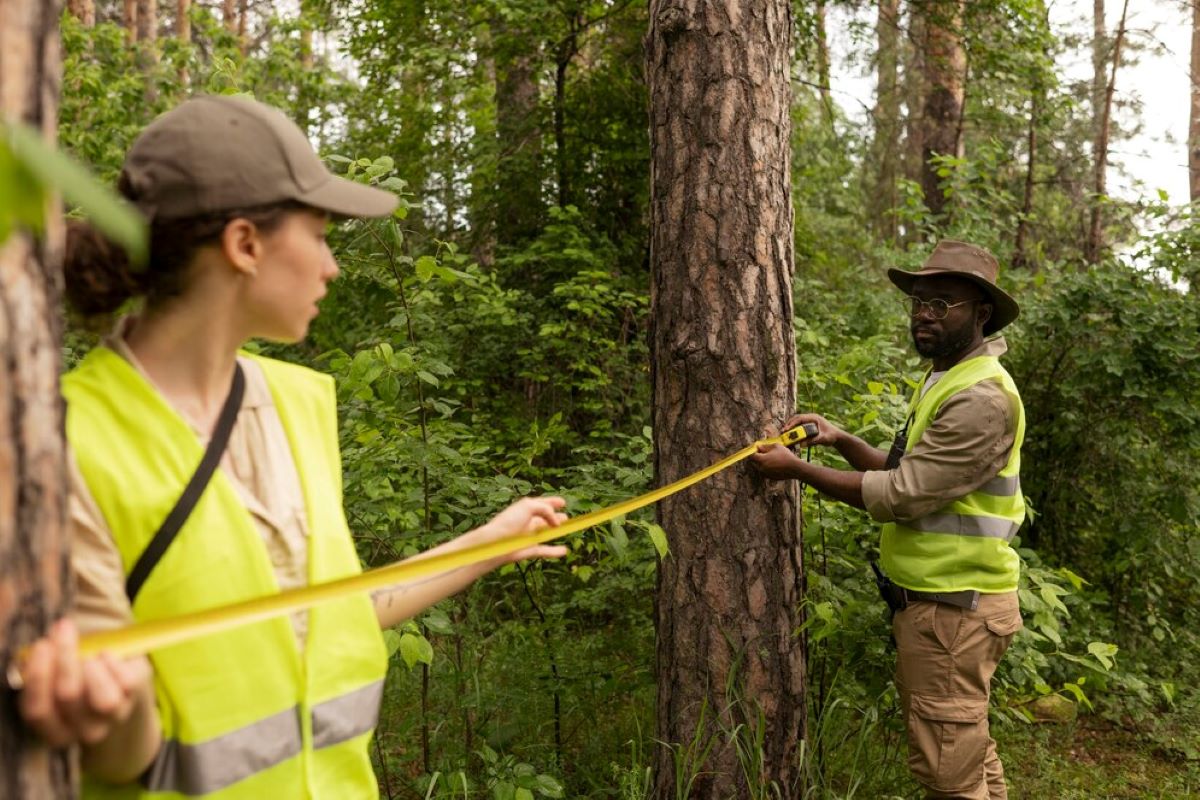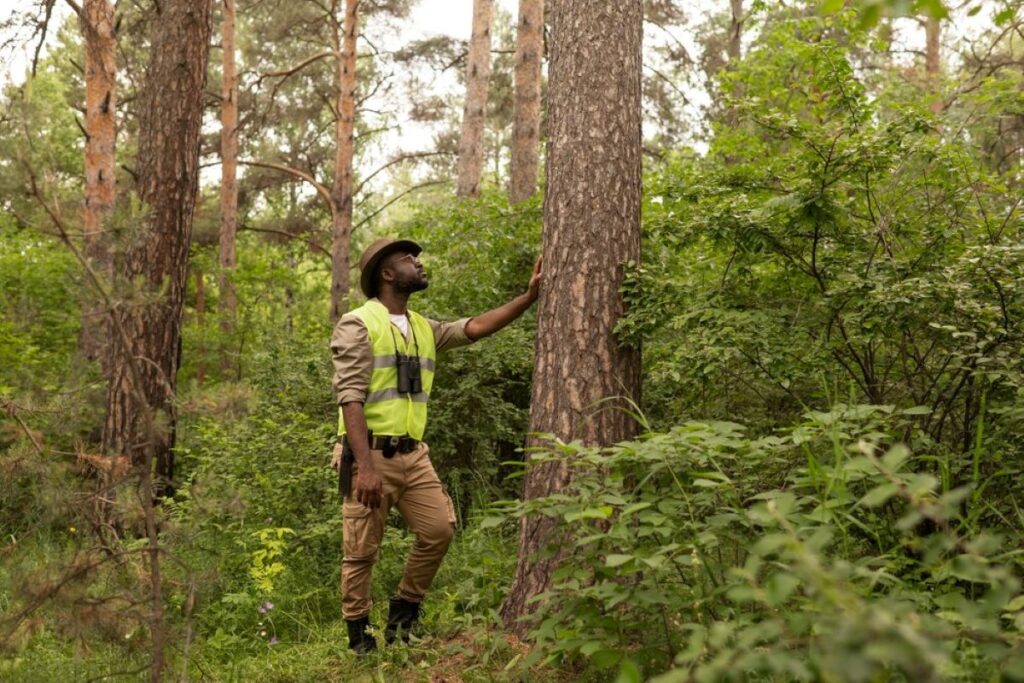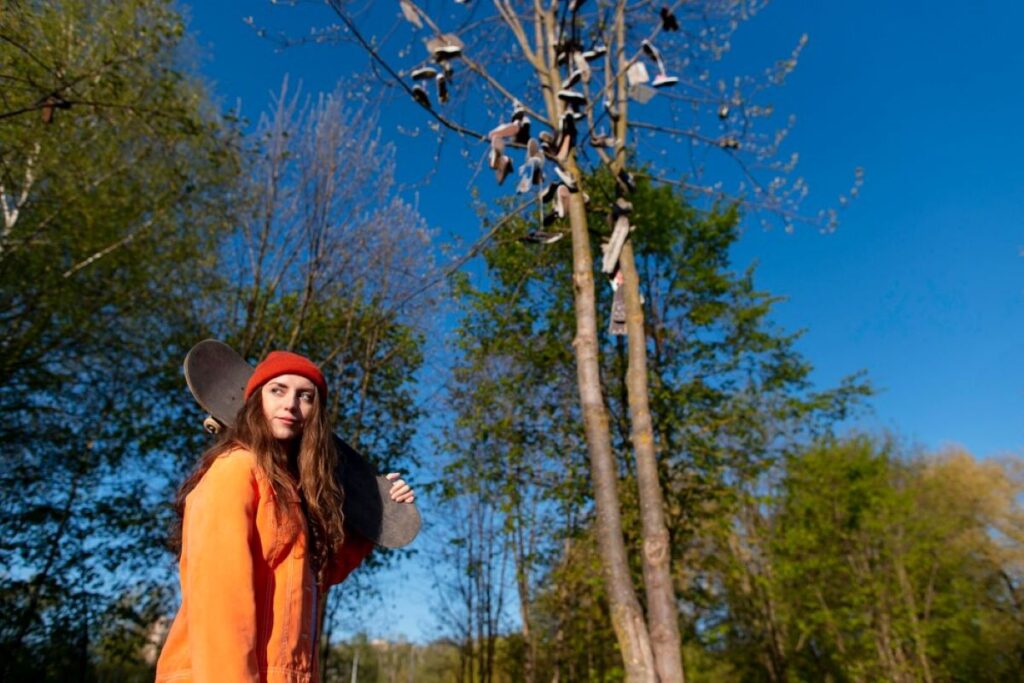
Tree Lopping Sydney: What You Need to Know Before You Book

Tree lopping is an important part of taking care of trees in urban areas. It involves using specific cutting and pruning methods to reduce the size of a tree. This service plays a crucial role in balancing Sydney’s urban development with its beloved green spaces.
In Sydney, where the city is constantly changing, tree lopping Sydney serves several important purposes:
- Safety Enhancement – Removing dangerous branches and controlling tree growth near buildings
- Property Protection – Preventing harm to houses, power lines, and infrastructure
- Tree Health Management – Promoting healthy growth and preventing diseases
- Urban Aesthetics – Keeping trees looking nice and well-shaped to enhance the surroundings
Sydney’s ever-changing environment requires professional tree management services to ensure both safety and natural beauty. Property owners need to understand the complexities of tree lopping in order to make informed choices about how to maintain their trees.
This detailed guide covers:
- Legal requirements and council regulations
- Professional assessment procedures
- Safety considerations and risk management
- Criteria for choosing tree lopping services
- Environmental responsibilities
- Other tree maintenance services
With this knowledge, property owners in Sydney can approach their tree lopping projects with confidence, making sure they follow local rules and preserve the city’s green heritage.
Understanding Tree Lopping vs. Tree Removal
Tree lopping and tree removal serve distinct purposes in tree maintenance. Tree lopping involves selective cutting of branches and limbs to reduce the size of a tree while maintaining its health and structural integrity. This advanced form of pruning helps manage tree growth, shape canopies, and prevent potential hazards from overgrown branches.
Tree Lopping Characteristics:
- Preserves the tree’s core structure
- Removes specific branches or sections
- Promotes healthy regrowth
- Maintains aesthetic appeal
Complete Tree Removal Features:
- Eliminates entire tree structure
- Includes root system extraction
- Permanent solution
- Changes landscape completely
The choice between lopping and removal depends on specific circumstances:
When to Choose Tree Lopping:
- Trees encroaching on power lines
- Branches threatening property
- Size reduction for aesthetic purposes
- Storm damage management
- Disease control through selective cutting
When Tree Removal is Necessary:
- Dead or dying trees
- Severe structural damage
- Disease beyond treatment
- Construction requirements
- Root system threats to foundations, which can often require complete removal for safety and structural integrity reasons.
- Safety hazards that cannot be mitigated through pruning
It’s important to note that trees are currently facing numerous challenges due to climate change, leading to situations where certain species are in peril. Professional arborists assess each situation to determine whether lopping or removal provides the most appropriate solution for tree management needs.
Legal Requirements and Council Regulations in Sydney
Sydney’s tree management laws protect urban greenery through strict regulations and permit requirements. Each local council maintains specific guidelines for tree lopping activities within their jurisdiction, which are part of broader tree protection laws in Australian states and territories.
Permit Requirements
- Written approval needed for trees exceeding prescribed height/trunk diameter
- Application must include detailed work specifications
- Professional arborist reports required for protected species
- Processing time varies between 2-4 weeks per council
Common Exemptions
- Dead or dangerous trees posing immediate risk
- Trees within 3 metres of approved buildings
- Specific non-native species listed by councils
- Emergency situations requiring urgent action
Penalties for Non-Compliance
- Fines ranging from $3,000 to $110,000
- Legal prosecution for serious breaches
- Mandatory replacement plantings
- Additional costs for remediation work
Protected Trees
Protected trees in Sydney include heritage-listed specimens, native species with ecological significance, trees in conservation areas, and significant landscape features. Local councils provide detailed information through their websites regarding specific requirements and application processes. Tree preservation orders (TPOs) vary between council areas, making it essential to check local regulations before commencing any tree lopping work.
Professional tree service providers maintain current knowledge of these regulations and can guide property owners through the approval process. This expertise helps avoid costly mistakes and ensures compliance with Sydney’s tree protection framework. These professionals also understand the importance of maintaining a healthy urban forest, which is crucial for the city’s environment and aesthetic appeal.
Assessment and Planning Before Tree Lopping
Professional tree assessment is a crucial first step in any tree lopping project. Qualified arborists carry out detailed inspections to evaluate:
- Tree health indicators:
- Disease presence
- Structural integrity
- Root system condition
- Branch stability
- Site-specific risk factors:
- Proximity to buildings
- Underground utilities
- Overhead power lines
- Soil conditions
A comprehensive cutting plan includes these assessment findings to establish safe work zones and identify potential hazards. Arborists map out precise cutting sequences, taking into account factors such as:
- Branch weight distribution
- Natural fall zones
- Equipment positioning
- Emergency access points
The assessment phase also involves thorough documentation of:
“Each tree requires unique consideration of its species, size, location, and surrounding environment to develop an effective lopping strategy” – Australian Arborist Association Standards
Certified arborists assess environmental impacts through:
- Habitat assessment – identifying wildlife presence
- Root zone protection – maintaining soil stability
- Impact on neighbouring vegetation – preserving ecosystem balance
- Weather conditions – scheduling optimal timing
This systematic approach ensures tree lopping work proceeds safely while protecting property and preserving local environmental values. Professional assessment minimises risks and establishes clear protocols for the actual lopping process.
Why Hire Professional Tree Loppers in Sydney?
Professional tree lopping requires specialised expertise and equipment that goes beyond basic gardening skills. Licensed arborists in Sydney bring years of training and experience to each project, ensuring precise cuts that protect tree health while achieving desired outcomes.
Safety Expertise and Equipment
Professional tree loppers have the necessary skills and tools to carry out their work safely. They use advanced climbing gear, safety harnesses, specialised cutting tools, and machinery to perform their tasks efficiently. Additionally, they possess technical knowledge of proper cutting angles and an understanding of tree physics and fall zones.
Insurance Protection
One of the key advantages of hiring professional tree services is the insurance coverage they maintain. This includes public liability insurance, professional indemnity coverage, workers’ compensation, as well as equipment and vehicle insurance. Such comprehensive insurance protection shields property owners from potential liability claims that may arise from accidents or property damage during the lopping process.
Value-Added Services
In addition to tree lopping, licensed arborists offer a range of value-added services that contribute to overall tree care:
- Stump grinding and removal
- Green waste disposal and recycling
- Wood chipping services
- Site clean-up post-service
- Expert advice on tree maintenance
These additional services ensure that all aspects of tree care are taken care of, providing convenience for property owners.
Working with insured tree services in Sydney delivers peace of mind through professional expertise, proper equipment handling, and comprehensive service offerings. These qualified professionals understand local tree species, weather patterns, and growth characteristics specific to Sydney’s climate, ensuring optimal results for each project.

Key Considerations When Choosing a Tree Lopping Company
Selecting the right tree lopping service requires careful evaluation of several critical factors to ensure quality, safety, and compliance with local regulations.
Research and Reviews
- Check online platforms for authentic customer feedback
- Ask neighbours and local community groups for recommendations
- Look for companies with consistent positive ratings spanning several years
- Review photo galleries of previous work to assess quality standards
Essential Credentials
- Valid Australian Business Number (ABN)
- Public liability insurance (minimum $20 million coverage)
- Workers’ compensation insurance
- Arborist qualifications and certifications
- Current equipment safety certificates
Local Knowledge and Expertise
- Understanding of Sydney’s unique tree species
- Familiarity with council-specific regulations
- Experience with local soil conditions and weather patterns
- Knowledge of protected species and heritage listings
Professional Standards
- Written quotes detailing scope of work
- Clear communication protocols
- Proper safety equipment and modern tools
- Documented risk assessment procedures
- Waste management and recycling practices
A reputable tree lopping company should readily provide documentation of their credentials and explain their approach to tree care. The initial consultation serves as an opportunity to assess their professionalism and technical expertise. Companies that demonstrate thorough knowledge of local regulations and environmental considerations typically deliver superior service outcomes.
Safety Protocols and Risk Management in Tree Lopping Work
Tree lopping involves significant hazards that require strict safety protocols and professional expertise. The most common risks include:
- Falling branches and debris
- Contact with live electrical wires
- Equipment-related accidents
- Weather-related hazards
- Chemical exposure during pest treatment
Professional arborists undergo extensive safety training to manage these risks effectively. This training includes:
- Emergency Response Protocols
- Aerial Rescue Techniques
- First Aid Certification
- Chemical Handling Procedures
- Equipment Operation Standards
A comprehensive risk management plan addresses multiple safety aspects:
- Site AssessmentIdentification of potential hazards
- Evaluation of surrounding structures
- Weather condition monitoring
- Equipment SafetyRegular maintenance checks
- Proper PPE requirements
- Chainsaw safety protocols
- Work Zone ManagementEstablishment of drop zones
- Traffic control measures
- Pedestrian safety barriers
Professional tree lopping companies maintain detailed documentation of safety procedures and conduct regular safety audits. These measures protect both the work crew and property owners from potential accidents and liability issues.
The implementation of robust safety protocols reflects a company’s commitment to professional standards and responsible tree care practices. Qualified arborists stay updated with the latest safety regulations and industry best practices through ongoing training and certification programmes.
Additional Services Provided by Tree Lopping Companies
Professional tree lopping companies in Sydney offer comprehensive service packages beyond basic tree cutting. These additional services enhance property maintenance and safety while ensuring environmental responsibility.
Stump Grinding Services
- Professional stump grinding eliminates unsightly remnants of felled trees
- Specialised equipment removes stumps to below ground level
- Prevents hazardous trip risks and unwanted regrowth
- Creates usable space for landscaping or construction
Green Waste Management
- Responsible disposal of branches, leaves, and wood chips
- Mulching services to repurpose organic materials
- Recycling programmes for sustainable waste management
- Collection and transportation of all tree-related debris
Professional Post-Service Inspections
- Detailed assessment of trimmed trees and surrounding area
- Identification of potential structural issues
- Monitoring of tree health and recovery
- Recommendations for ongoing maintenance
Site Clean-up and Restoration
- Complete removal of all tree-related debris
- Levelling and preparation of affected ground areas
- Protection of surrounding vegetation
- Restoration of garden beds and lawn areas
These complementary services ensure a thorough and professional approach to tree management. Qualified arborists conduct regular follow-up inspections to monitor tree health and identify potential issues before they become serious problems. The combination of expert stump grinding, responsible waste management, and professional aftercare creates a complete tree maintenance solution for Sydney property owners.
Moreover, it’s essential to consider the broader impact of these services on the urban environment. For instance, the site clean-up and restoration process not only involves removing debris but also includes restoring the landscape to its original state. This could involve preparing the ground for new plantings or ensuring that existing vegetation is protected during the process.
Additionally, the importance of maintaining healthy trees in urban areas cannot be overstated. Trees play a crucial role in enhancing air quality, providing shade, and improving overall aesthetics. Therefore, professional post-service inspections are vital in monitoring tree health and addressing any potential issues promptly.
In some cases, when dealing with street trees, it’s important to follow specific guidelines to ensure their health and longevity. For more information on this topic, you may refer to resources provided by local public works departments such as San Francisco’s Street Tree Program, which outlines best practices for managing urban trees.
The Role of Trees Down Under in Sydney’s Tree Services Market
Trees Down Under is a leading service provider in Sydney’s North Shore and Hills District, offering specialised solutions for managing vegetation. Their wide range of services includes:
- Land clearing and site preparation
- Environmental impact assessments
- Regulatory compliance management
- Professional arborist consultations
The company’s dedicated team has extensive expertise in handling complex tree management projects for both residential and commercial properties. They are committed to protecting the environment and this is reflected in their careful approach to each project, ensuring minimal ecological impact while meeting strict local council requirements.
Trees Down Under’s integrated service model combines technical skills with in-depth knowledge of the local area, making them a trusted partner for property owners in Sydney’s northern regions who are looking for professional tree care solutions.

Environmental Responsibility Through Sustainable Tree Care Practices
Sustainable tree care practices create significant environmental benefits in Sydney’s urban landscape. Regular maintenance and professional tree lopping help:
- Preserve native wildlife habitats
- Improve air quality
- Reduce urban heat island effects
- Manage stormwater runoff
- Create natural sound barriers
Well-maintained trees directly impact property values in Sydney’s residential areas. Research indicates properties with healthy, properly maintained trees can see value increases of 5-15%. Strategic tree placement and professional care deliver:
- Enhanced street appeal
- Natural shade and cooling
- Reduced energy costs
- Improved privacy screening
- Better soil stability
Professional tree lopping services ensure these environmental and financial benefits continue while maintaining safe, healthy urban greenery. Regular assessments and maintenance protect both the environment and property investments, creating sustainable urban spaces for future generations.
